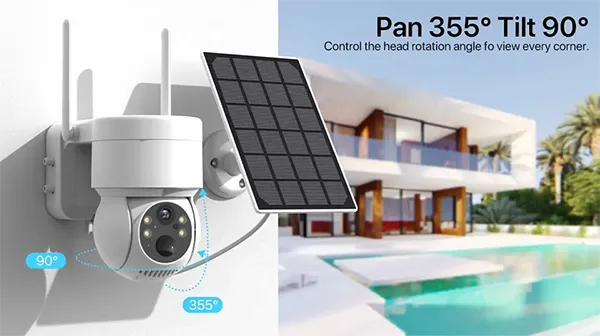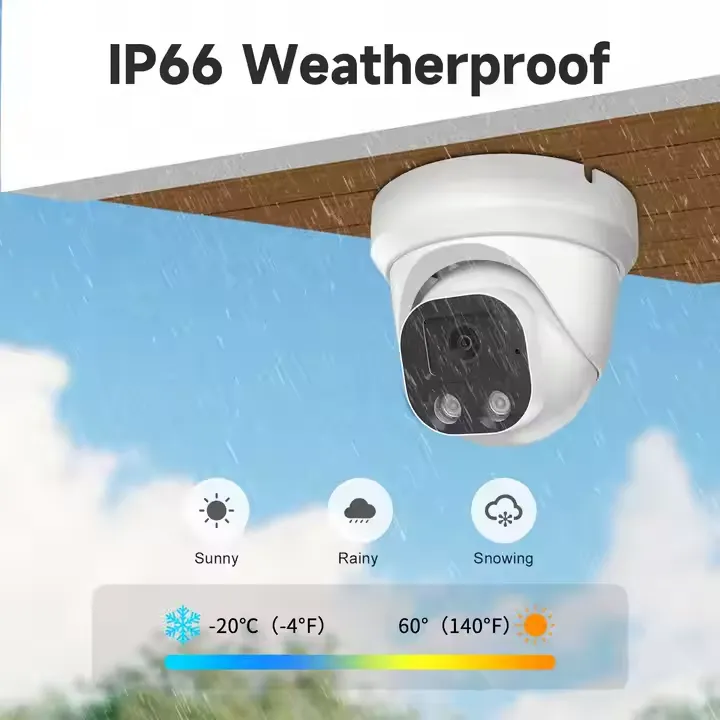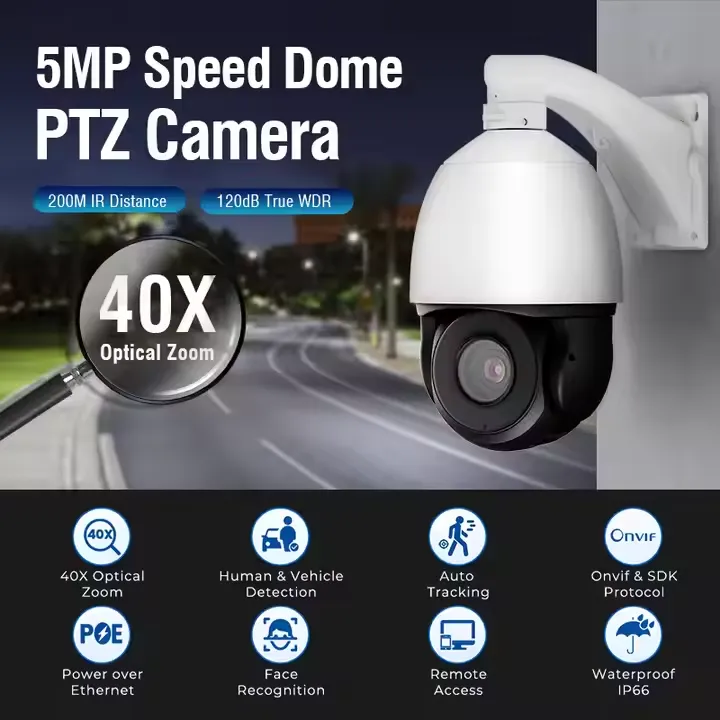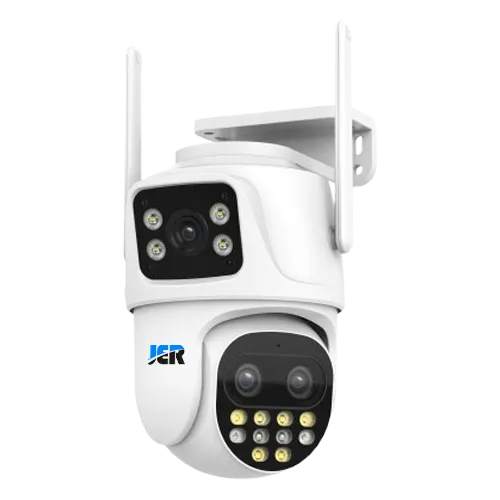In an era where security threats evolve daily, businesses are increasingly turning to wholesale surveillance solutions to protect assets, employees, and operations. This guide unpacks everything from market trends to procurement strategies, helping you navigate the $54.42 billion global surveillance industry with confidence.
Quick Reference: Surveillance Camera Market at a Glance
| Market Metric | Value |
|---|---|
| Global Market Size (2024) | $43.65 – $54.42 billion |
| Projected Market Size (2030) | $81.37 – $88.71 billion |
| Annual Growth Rate | 8.5% – 11.2% CAGR |
| Market Leader Region | Asia Pacific |
| Fastest Growing Region | North America |
Top Benefits of Buying Wholesale
- Cost Savings: Reduce per-unit prices by up to 40%
- Access to Professional Grade: Higher quality equipment is not available in retail
- Direct Manufacturer Relationships: Better support and customization options
- System Scalability: Easier expansion as security needs grow
- Value-Added Services: Technical support and extended warranties
Understanding the Global Surveillance Camera Market
The global surveillance camera market is experiencing remarkable growth as security concerns intensify across industries. Moreover, the market shows no signs of slowing down, with projections indicating substantial expansion in the coming years.
Current estimates value the global market between $43.65 billion and $54.42 billion in 2024, with forecasts suggesting it will reach $81.37-$88.71 billion by 2030. Even more impressively, the CCTV camera market specifically is projected to surge to $234.11 billion by 2034, growing at an impressive 16.45% CAGR.
Geographically, the Asia Pacific region currently dominates the market, thanks to rapid urbanization and significant investments in smart city initiatives. However, North America is poised to become the fastest-growing region, driven by heightened security concerns and robust IT infrastructure, particularly in the United States.
Several factors are fueling this remarkable growth, including:
- Increasing security concerns among businesses and governments
- Rapid urbanization requires enhanced monitoring systems
- Growing counter-terrorism and crime prevention efforts
- Advanced data analytics enabling valuable insights from footage
- Government-led smart city initiatives
Despite these strong drivers, the market faces challenges including privacy concerns, cybersecurity vulnerabilities, high initial investment costs, and the need for substantial storage capacity and trained personnel.

Types of Surveillance Cameras Available in Wholesale Markets
The wholesale surveillance market offers diverse camera technologies tailored to specific security needs. Understanding these options helps businesses make informed procurement decisions.
IP Cameras and Their Advantages
IP cameras represent the modern standard in video surveillance, transmitting digital video over networks. These cameras offer superior features, including:
- Higher resolutions (up to 4K) for clearer footage
- Remote viewing capabilities from anywhere with internet access
- Seamless integration with existing network infrastructure
- Availability in both wired and wireless configurations
- Various form factors, including bullet, dome, and PTZ designs
Analog Cameras: Budget-Friendly Options
Despite technological advances, analog cameras remain relevant for cost-conscious applications:
- More affordable initial investment
- Simpler installation and familiar technology
- Compatibility with existing coaxial cable infrastructure
- Reliable performance for basic surveillance needs
PTZ Cameras for Dynamic Monitoring
Pan-Tilt-Zoom (PTZ) cameras offer comprehensive coverage through their dynamic capabilities:
- Remote control to pan horizontally, tilt vertically, and zoom optically
- Ability to monitor large areas with fewer cameras
- Optical zoom maintains image quality on distant objects
- Ideal for expansive areas like parking lots, warehouses, and campuses
Specialized Camera Types
For unique security challenges, specialized cameras offer targeted solutions:
- Thermal Cameras: Detect heat signatures for zero-light conditions
- Solar Cameras: Self-powered solutions for remote locations
- Cellular Cameras: 4G/5G connectivity where wired internet is unavailable
- Turret/Eyeball Cameras: Flexible mounting with vandal-resistant designs

Wholesale vs. Retail: Why Businesses Choose Wholesale Cameras
Purchasing surveillance equipment through wholesale channels offers compelling advantages compared to retail options:
Cost Savings and Bulk Purchasing Advantages
Perhaps the most significant benefit is cost-effectiveness. Wholesale suppliers typically offer 20-40% lower per-unit prices than retail outlets, particularly for larger orders. This makes comprehensive security coverage more affordable, especially for businesses requiring multiple cameras.
Access to Professional-Grade Equipment
Wholesale channels often provide access to higher-quality, professional-grade equipment that may not be available through standard retail channels. These cameras typically offer superior build quality, more advanced features, and greater reliability in demanding environments.
Direct Manufacturer Relationships
Many wholesale suppliers, like Shenzhen JER Technology, maintain direct relationships with manufacturers. This connection eliminates middlemen, reducing costs while providing better product knowledge, customization options, and technical support.
Scalability Benefits
Wholesale systems are designed with expansion in mind. As security needs grow, businesses can easily add cameras and accessories to their existing systems without compatibility issues, ensuring a future-proof investment.
Value-Added Services
Reputable wholesale suppliers offer valuable extras like:
- Customized installation guides
- Comprehensive technical support
- Extended warranty options
- System design consultation
- Firmware updates and maintenance assistance
How to Choose the Right Surveillance Camera Wholesale Supplier
Selecting an appropriate wholesale supplier is crucial for ensuring quality, reliability, and value. Consider these key factors during your evaluation:
Product Quality and Reliability
Quality should never be compromised. Look for suppliers with:
- Detailed product specifications
- Industry certifications (CE, FCC, RoHS)
- Sample testing opportunities
- Clear quality control processes
Pricing Structures and Payment Terms
Compare pricing transparently among potential suppliers:
- Request detailed quotations for your specific needs
- Understand volume discount tiers
- Clarify payment terms and acceptable methods
- Check for hidden fees or additional charges
Minimum Order Quantities
Ensure the supplier’s MOQs align with your purchasing needs to avoid overstocking or failing to meet requirements.
Product Variety and Customization Options
Choose suppliers offering diverse product ranges to meet various security scenarios. Leading suppliers should provide options for customization, including private labeling or specific feature configurations.
Shipping and Logistics Capabilities
For international transactions, evaluate:
- Shipping methods and timeframes
- Experience with customs procedures
- Packaging quality to prevent damage
- Tracking capabilities
After-Sales Support and Warranty
Robust support and warranty policies are essential:
- Technical support availability and responsiveness
- Warranty duration and coverage scope
- Return and replacement policies
- Access to firmware updates
Supplier Reputation and Experience
Research thoroughly before committing:
- Check online reviews and testimonials
- Request client references
- Verify years in business
- Examine case studies or project portfolios

Understanding Wholesale Pricing and Cost Factors
Wholesale pricing structures differ significantly from retail pricing and are influenced by multiple factors:
Volume Discounts and Tiered Pricing
Most wholesale suppliers offer progressive discounts based on order quantity. Tiered pricing models typically provide incremental savings as volume increases, rewarding larger purchases with better per-unit rates.
Technical Specifications Affecting Price
Several camera specifications directly impact pricing:
- Resolution: Higher resolutions (2MP, 4MP, 4K) increase costs
- Smart Features: AI analytics and advanced capabilities add premium
- Storage: Greater capacity increases price
- Protection Rating: Weather/vandal resistance affects cost
- Brand Reputation: Established brands command higher prices
- Specialized Technology: Thermal imaging or other advanced features significantly impact cost
Hidden Costs to Watch For
Be aware of potential additional expenses:
- Shipping and handling fees
- Customs duties and import taxes
- Software licenses for management systems
- Required accessories not included in base pricing
Total Cost of Ownership Considerations
Look beyond the initial purchase price to understand the complete investment:
- Installation costs for wiring and mounting
- Electricity consumption
- Maintenance requirements
- Potential cloud storage subscriptions
- System upgrade pathways

Industries and Applications: Who Benefits from Wholesale Surveillance
Wholesale surveillance cameras serve diverse sectors with specialized security needs:
Retail and Loss Prevention
Retail businesses leverage surveillance to:
- Deter shoplifting and employee theft
- Monitor checkout operations
- Analyze customer behavior and traffic patterns
- Enhance store layout optimization
Commercial Buildings and Offices
Office environments utilize surveillance systems for:
- Controlling building access
- Protecting assets and confidential information
- Ensuring employee and visitor safety
- Monitoring common areas and entrances
Industrial Facilities and Warehouses
Manufacturing and warehouse operations benefit from:
- Securing valuable inventory and equipment
- Monitoring production processes
- Ensuring worker safety compliance
- Preventing unauthorized access
Government and Public Institutions
Public sector applications include:
- Securing government buildings
- Monitoring public spaces
- Enhancing transportation security
- Supporting law enforcement operations
Residential Communities
Multi-unit residential properties implement surveillance for:
- Monitoring entrances and common areas
- Deterring property crime
- Enhancing resident safety
- Managing visitor access
Transportation and Logistics
This sector relies on surveillance for:
- Monitoring vehicles and fleet operations
- Securing transportation hubs
- Overseeing loading and unloading activities
- Preventing cargo theft
Educational Institutions
Schools and universities implement surveillance to:
- Enhance campus security
- Monitor student activity in common areas
- Protect school property
- Control access to facilities
Healthcare Facilities
Hospitals and clinics utilize surveillance for:
- Securing sensitive areas like pharmacies
- Monitoring patient and visitor flow
- Protecting expensive medical equipment
- Ensuring staff and patient safety
Latest Technological Advancements in Surveillance Cameras
Staying current with technological innovations ensures your security investment remains effective:
AI-Powered Analytics and Smart Features
Artificial intelligence has revolutionized surveillance capabilities:
- Facial recognition for access control
- Object detection, identifying specific items or vehicles
- Anomaly detection alerting to unusual behaviors
- People counting for occupancy management
- License plate recognition for parking management
According to Security Magazine, AI-powered analytics is expected to grow at 22% CAGR through 2027.
Cloud Storage Solutions
Cloud storage provides significant advantages:
- Remote access from anywhere with internet connectivity
- Scalable storage capacity
- Enhanced data protection through redundancy
- Automatic updates and maintenance
Improved Image Quality and Night Vision
Advancements in image clarity include:
- Higher resolutions (4K and beyond)
- Enhanced low-light performance with starlight technology
- Color night vision capabilities
- Wide Dynamic Range (WDR) balancing bright and dark areas
Edge Computing Innovations
Processing data directly on cameras offers:
- Reduced bandwidth requirements
- Lower latency for real-time alerts
- Decreased dependence on central servers
- Enhanced privacy through localized processing
IoT Integration Capabilities
Connected surveillance systems provide:
- Interaction with access control systems
- Integration with alarm and fire detection
- Connection to building automation
- Comprehensive security ecosystem management
The IoT security market is expected to reach $59.2 billion by 2029, reflecting this growing integration trend.
Wireless Connectivity Advancements
Modern wireless options include:
- Enhanced Wi-Fi range and stability
- 4G/5G cellular connectivity
- Mesh network capabilities
- Low-power wireless protocols for battery operation
Privacy-Focused Technologies
Balancing security with privacy through:
- Advanced encryption methods
- Privacy masking for sensitive areas
- Anonymization technologies
- Compliance-focused data handling

FAQs About Buying Surveillance Cameras Wholesale
What are the main benefits of buying surveillance cameras wholesale?
Wholesale purchasing offers significant cost savings (typically 20-40%), access to professional-grade equipment, direct manufacturer support, system scalability, and value-added services not available through retail channels.
How do I determine which type of surveillance camera is right for my business?
Consider your specific security needs, environment (indoor/outdoor), lighting conditions, required image quality, monitoring area size, and integration requirements. Professional wholesale suppliers can provide guidance based on these factors.
What technical specifications should I prioritize when selecting surveillance cameras?
Focus on resolution (at least 2MP for clear identification), frame rate (minimum 15fps for smooth motion), field of view appropriate for your space, night vision capabilities, and weather resistance ratings for outdoor installations.
How can I ensure the wholesale supplier provides quality products?
Look for suppliers with industry certifications, detailed product specifications, quality control processes, positive customer reviews, and sample testing options. Established suppliers like Shenzhen JER Technology typically offer more reliable products.
What is the typical lifespan of professional surveillance cameras?
Quality wholesale surveillance cameras generally have a lifespan of 5-7 years, though this can vary based on environmental conditions, usage patterns, and maintenance. Higher-quality cameras from reputable manufacturers tend to last longer.
Can I expand my surveillance system in the future?
Yes, most wholesale surveillance systems are designed with scalability in mind. Ensure compatibility between new and existing components by working with the same supplier and considering future expansion needs during initial system design.
What storage options should I consider for recorded footage?
Options include local storage (NVRs/DVRs), cloud storage, or hybrid approaches. Consider retention requirements, bandwidth availability, and budget when selecting storage solutions. According to Security Informed, storage needs are growing at 25% annually due to higher resolutions.
Conclusion: Making Smart Wholesale Surveillance Purchasing Decisions
The surveillance camera wholesale market offers businesses significant advantages in terms of cost savings, product quality, and system flexibility. By understanding the current market landscape, camera types, and technological trends, organizations can make informed decisions that enhance their security posture while optimizing their investment.
When selecting a wholesale supplier, prioritize product quality, pricing transparency, after-sales support, and reputation. Consider the total cost of ownership beyond the initial purchase price, including installation, maintenance, and potential upgrades.
As surveillance technology continues to evolve with AI analytics, improved image quality, and enhanced connectivity options, partnering with an experienced wholesale supplier becomes increasingly valuable. Shenzhen JER Technology Co., Ltd. offers the expertise, product range, and support services to help businesses navigate these choices and implement effective security solutions.
Ready to Enhance Your Security Infrastructure?
Shenzhen JER Technology Co., Ltd. provides high-quality wholesale surveillance solutions tailored to your specific business needs. With over 15 years of industry experience, competitive pricing, and comprehensive support, we’re your ideal partner for security equipment procurement.


